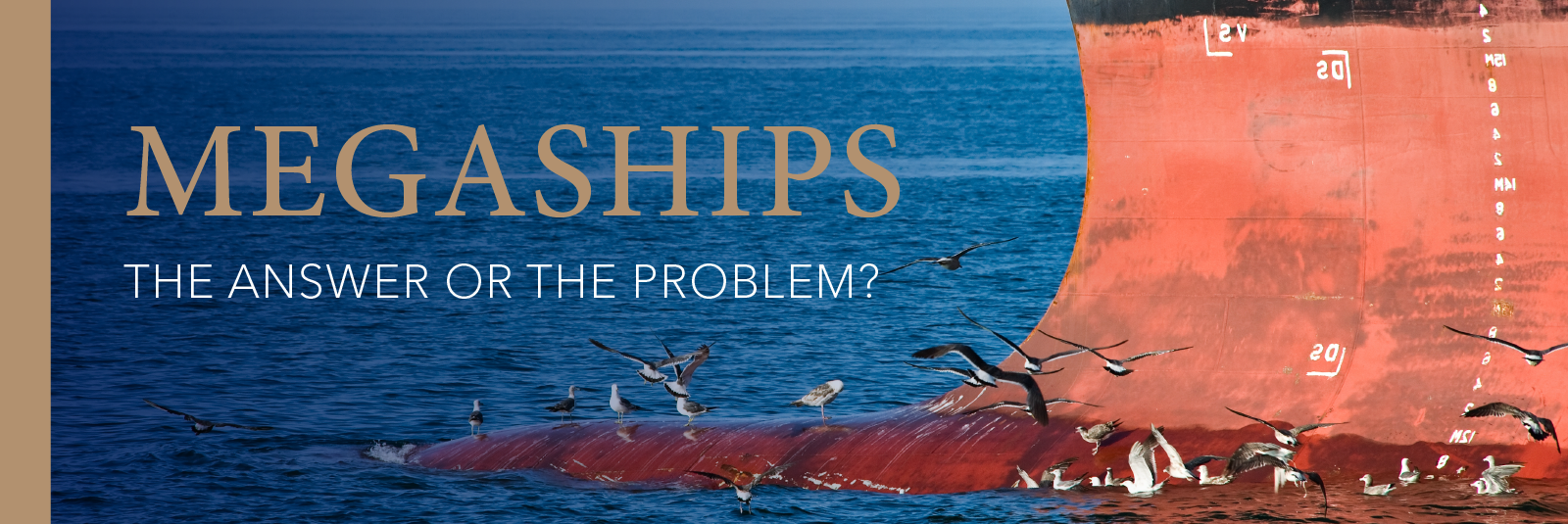Globalization and friendly international trade agreements have propelled a huge increase in marine traffic. Not only are more ships on the water, but bigger ships are traversing trade routes. And ship sizes continue to grow, spawning the term “mega-ships.”
As Statista reports, “While the quantity of goods carried by containers has risen from around 100 million metric tons in 1980 to about 1.7 billion metric tons in 2015, vessels have likewise increased their capacity. Between 1980 and 2016, the deadweight tonnage of container ships has grown from about 11 million metric tons to around 244 million metric tons.”
Mega-ships are primarily operating in the Asia-Europe routes because those trading lanes have both the greatest demand and distance, making mega-ships the economical choice (in theory). The title of largest mega-ship in the world currently belongs to OOCL Hong Kong, which has a cargo capacity of a whopping 21,413 TEUs and measures approximately 400 meters long and 60 meters wide.
But are mega-ships really the most efficient and economical answer? With every problem these vessels solve, they potentially introduce new challenges to the marine industry:
- Cost Savings
Over the last decade, the container ships have doubled in size and total vessel costs have dropped. But those cost savings are slowing. Mega-ships are improving by adding more sophisticated on-board technologies and making engines more efficient, not necessarily by increasing in size.
Also, there has been a rush to develop mega-ships and the marine industry is facing an overabundance of these vessels. There won’t be any cost savings if the mega-ships can’t fill their cargo capacity.
In an article from The Maritime Executive, Patrik Berglund, CEO of market intelligence company Xeneta summarizes the issue by saying, “A staggering 78 new mega-ships are due to come online for the Asia-Europe trades over the next two years, pushing capacity up by over 23 percent...Mega-ships of 18,000 TEUs need to command utilization rates of at least 91 percent to achieve cost savings. Even in the high volume Asia-Europe trades that is difficult…”
- Infrastructure Expansions
Infrastructures must be expanded to accommodate these massive vessels: dredging rivers to gain more depth, raising bridges for more height, adding bigger port equipment like cranes, expanding canals and locks, etc. The cost of upgrading worldwide infrastructures will easily reach billions of dollars. The Panama Canal Expansion, which took a decade to complete, was estimated to cost $5 billion.
Not only does this require massive financial investment from the public sector, which will eat away at cost savings, but the length of time it takes to implement these expansions could hurt efficiency in the short term.
- Insurability
Mega-ships carry more cargo, which means they carry more risk. If an incident happens, the size of the vessel alone guarantees there will be a bigger disruption to a supply chain. It’s also more difficult and expensive to salvage or wreck a mega-ship. And an accident with a mega-ship could have a much larger impact on the environment, which will increase costs and gain unwanted media attention. The marine insurance industry will be treading lightly with mega-ships and the risk of loss and liability will undoubtedly be higher.
To learn more about mega-ships and how they’re impacting the marine insurance industry:





